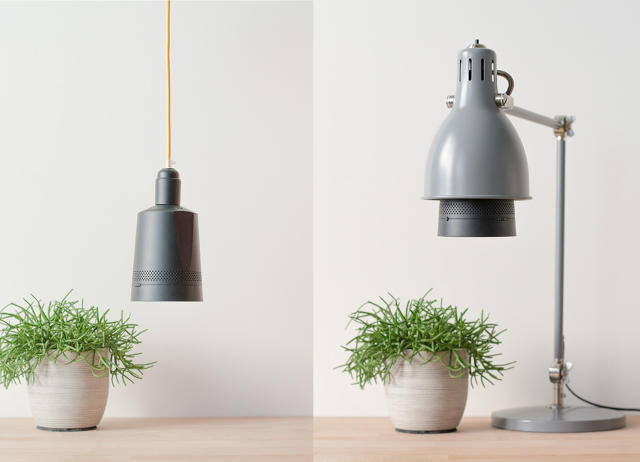ARTICLE
featured
A Lightbulb-Shaped Projector Could Power The Smart Home Of The Future
12:35 PMACTZone IndonesiaThe creators of Beam, a smart projector that fits into a light socket, are onto something.
Beam, a lightbulb-shaped gadget, promises projects your smartphone screen onto any surface you want. Launched on Kickstarter this month, the $350 projector screws into any lightbulb socket, so you can set it up anywhere you’d normally stick a lamp, allowing you to play videos on your wall, view digital photo albums on your kitchen table, or, in general, make your smartphone screen a (literally) bigger presence in your house.
As a self-contained device, it seems destined for mediocrity, largely thanks to its dim 100 lumens lamp that makes a 40-watt lightbulb seem like the sun. But one design detail—the fact that it slots into a light socket—hints at a promising way of turning dumb homes smart.

Light bulbs have long been an easy smart home upgrade, since it's cheap and easy to slap a sensor and a Wi-Fi chip on them, and there's little extra installation work. But now with the more futuristic smart home concepts moving to turn any number of surfaces around the house into computers and interactive displays—say, to project a recipe onto your kitchen counter or check your email on the living room wall—figuring out how to mount these new devices of varying form factors on walls and ceilings, let alone power them, is proving to be a hurdle towards mass adoption.
The average home owner isn't going to spend the time and money to rewire their house just to track their movement around the house. And even if they did, hanging a motion sensor from the ceiling isn’t an attractive way to decorate your home. Its why both Frog Design and MIT both understood this with projects a few years back and also conceived of a motion tracker which shared the same form as your standard lightbulb.

And while this basic, light socket-powered idea has also manifested itself in the form of wireless speakers, the design is especially suited towards projecting images and tracking motion because those technologies generally function best when mounted on a ceiling. It goes past novelty and begins to solve some real problems.
Which is what makes designing around a home's existing infrastructure so genius. Using a light socket as power source makes setting up a smart home easy. There are already lights all over your house; you don’t need to install a bunch of extra wiring; and because we're all so familiar with ceiling lighting, devices will blend more conspicuously into the decor of our homes. Thanks to Wi-Fi being cheap and ubiquitous, these devices don't need to be hardwired to a smart home's central brain. It just needs the power to transmit the necessary data, which makes a light socket a perfect fit. And if you decide you want to upgrade or rearrange your smart home components, you're not left with the visible traces of customized installations all over the house—just a spot where you could pop a light bulb in.
And when installed, a lamp-based projector could theoretically be adjusted to point wherever you’d like, so you could overlay images and text on objects in your home, like pulling up cooking instructions right over where you’re prepping the food. The best part? You could install a light socket device in whatever beautiful lamp you’d like.
While Beam may not be the life-changing smart home device we've been waiting for, it does bring us one step closer to that future.











0 comments
Note: Only a member of this blog may post a comment.